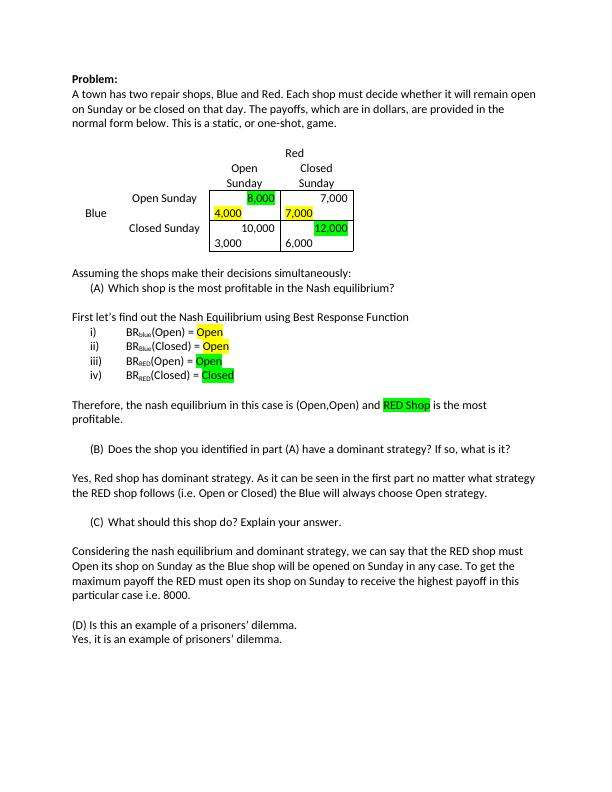Nash Equilibrium and Dominant Strategy in Game Theory
4 Pages1147 Words414 Views
Added on 2019-09-26
About This Document
This article explains Nash Equilibrium and Dominant Strategy in Game Theory with solved examples. It also discusses how to identify Nash Equilibrium and Dominant Strategy in a game. The article covers topics like prisoners' dilemma, simultaneous move game, and autoregression models.
Nash Equilibrium and Dominant Strategy in Game Theory
Added on 2019-09-26
ShareRelated Documents
End of preview
Want to access all the pages? Upload your documents or become a member.


